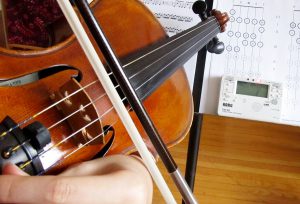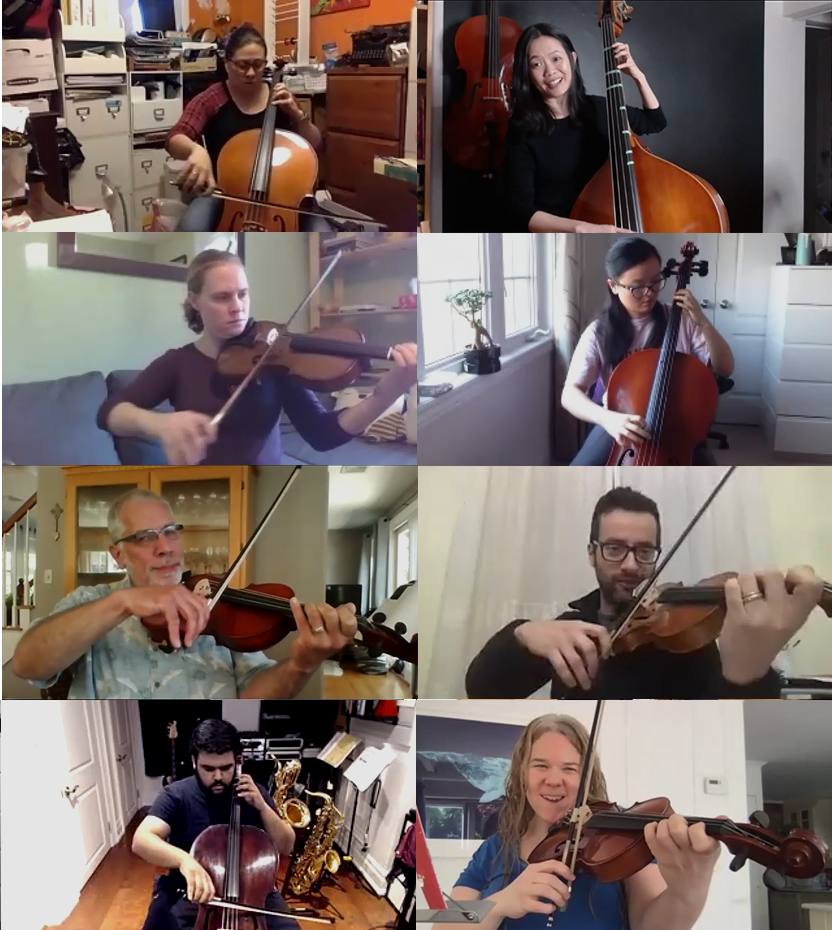It always happens. Just when you think you’ve given your class enough time to tune, a student comes up to you with a loose string, or a fine tuner that is too low, or a broken string… and there goes a few more precious minutes of class. Or some students don’t know what to do with themselves while others are tuning, and are either chatting or wandering around the classroom. It’s obvious to you they should be practicing, not socializing, right? Well, unfortunately, it’s not obvious to them.
Clarify Your Routines
Inspired to improve my classroom management skills by another smart blog, Michael Linsin’s smartclassroommanagement.com, I’ve decided to tackle this little daily annoyance. As I’ve said in previous posts, I don’t lack routines in the classroom, but they could definitely use some clarification. And there’s no better clarification than the simple yet powerful list.
In the string classroom, tuning is essential but it can take a good chunk away from your instructional time. It therefore pays for this to be done as efficiently as possible.
Determine What You Want to See Happen
Take a few classes to determine exactly what you want the students to do during tuning time, and to identify the little annoyances that you want to avoid. Then establish a tuning routine that addresses all your concerns and share it with your students. I displayed the list on an overhead during tuning time for two or three classes in a row, until I was sure they knew what to do. When someone forgets some aspect of the routine, I whip it out again and go over it to remind them. As Michael Linsin teaches in this article, one of the most effective classroom management techniques you can employ is to:
- Stop your class. 2. Reteach your expectations. 3. Begin again.
Before I share with you my new tuning routine, I should explain that I teach all my students to tune themselves with a chromatic tuner. I describe my reasons why in my post, Setting Up for Fingering and Tuning Success, but in short, I believe that in the kind of teaching situation I am in, it is important that the students always start class off with their instruments perfectly in tune. This helps develop their ear as they learn to play. Later on, I give them the opportunity to learn to tune their instruments by ear, which I will share in a future post.
The following is my tuning routine. Feel free to use it to help you establish a routine that works for you.
Daily Tuning Procedure
- There is a tuner labelled for each section so that every section starts with one.
- Make sure the top left hand corner of the screen says 440hz. If not, please adjust it with the up/down arrows.
- Get your instrument tuned within the first 5 minutes of class.
- If a fine tuner is all the way down, raise it back up and ask the teacher to re-tune the string for you with the pegs.
- If a string is very out of tune, bring it right away to the teacher to tune with the pegs.
- Seniors should try tuning with the peg themselves after the lesson on how not to break a string. If you need help please, try to ask before I start the class.
- If a string breaks, let me know and put your instrument on or beside my desk. Please use another instrument for class.
- You should be working on practicing and memorizing your scales and focusing on improving some aspect of technique while waiting.
- If your section is finished with the tuner, pass it on to another section that is still tuning.
- Remember to turn off the tuner.
- Put the tuners back into the basket at the front of the class.
You will notice that I clearly describe what they should be doing if they are waiting for others to tune. I have a time limit, a procedure for when they need my help, and for sharing the tuners. You’ll also notice that I teach my seniors how to tune with the pegs, for which I will have a video for you soon.
I do have this quick video I made on how to change and wind a string properly. It shows students how to change a string, how to wind the string properly and why, and how to tune without breaking the string.
Hope that this post is helpful to you in establishing some new routines in your string classroom. Please share with us your tuning routine so we can benefit from each other’s ideas!




Leave a Reply